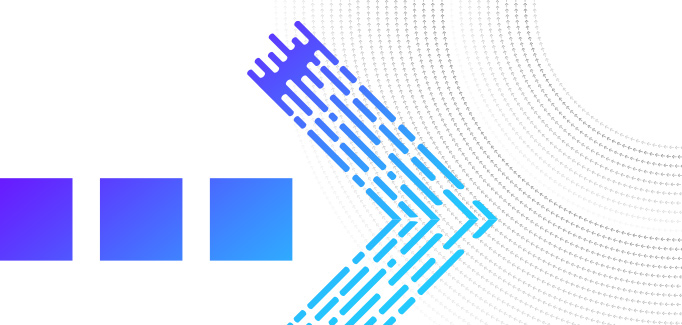2021 Fraud Predictions
December 15th, 2020

Following on from my review of 2020 and last year’s predictions, it’s time to have a look at what we’ll see in the fraud space in 2021. I’ll look at fraud trends and what we might see in developments in how to combat fraud, along with the regulatory landscape. Let’s get started.
Fraud Prediction 1: Regulatory
Regulatory interest in fraud is going to increase in the U.S., as it has already started to do in Europe. The level of stimulus fraud experienced on both sides of the Atlantic, will be a big reason for this, as $100 billion in fraud gets politician’s interest. This is likely to concentrate on mule accounts as without them, most of these frauds would not have occurred. We’ve already seen that the Estonian regulator mandate real-time inbound payment profiling and the Contingent Reimbursement Model (CRM) in the UK is driving this too, so I’d expect to see more pressure on this front during 2021.
In a similar vein will be further focus on authorised fraud, both as paying and beneficiary banks and Fintechs. In the UK, the current voluntary rules are likely to be made mandatory, as the large banks seek regulatory capture. This will start to gain traction with other regulators, particularly in Europe, although this may be a part of PSD3, and may take some time to come about.
We’ll also see pressure, regulatory and/or commercial, to move from open banking to open finance. As PSD2 in Europe only covers payment accounts, we’ll start to see the pressure build on savings, mortgages and then into pensions and investments. It may also start to cover big tech, putting the customer at the centre. Of course, this may also make life easier for fraudsters. However, those firms that show that they can improve customers’ finances and improve security by utilising the power of seeing the whole picture may be onto a winner.
Fraud Prediction 2: Payment Fraud
After a few years of authorised fraud, particularly business email compromise (BEC) being the growth fraud, and as the stimulus payments dry up in H2 2021, we are likely to see an uptick in remote frauds such as account takeover (ATO) and e-commerce.
It is clear that the level of compromised card data and digital credentials is huge as lockdowns recede, allowing unhindered movement for mules to cash out, we’ll see gangs attack again. Improved authentication and the ability to do this in a risk-based fashion will be key here as the volumes of genuine transactions are growing extremely fast (years’ worth in just a few weeks), putting pressure on decline rates.
The increase in real-time payments, request to pay/for payment and all those new users who are new to digital security, will make this an attractive avenue for fraudsters.
One area we are likely to see exposed more is in the SME and corporate space, where the desire to support more working from home means that remote access to payments for corporate treasury and payments teams will increase. This is likely to be abused by fraudsters if the right education, training, authentication and fraud detection is not put in place.
One of the areas we’ll see more of on the authorised fraud side is from deep fakes, whether voices or videos. This will make these schemes even more sophisticated, so financial services organizations (FSOs) will need to help protect corporate customers from these attacks.
Fraud Prediction 3: Consolidation of End Points
Moving to infrastructure and systems, there are a few trends at play. FSOs, particularly the largest, will be working hard to consolidate systems and build out their roadmaps to become truly enterprise fraud management systems. As the fraud trends above have shown, all these frauds are interlinked and if the data is removed from silos, the improvement in prevention can be huge.
Some FSOs are sitting on 20-30 point solutions, as many providers who do one specific function. With Device Profiling, Behavioral Biometrics and telco data among a plethora of point solutions and around 150 vendors in the wider ecosystem, how to manage this from cost, complexity and risk is a key area for FSOs. Being able to call these services as an API from within a hub offers a solution to these challenges.
Does the additional complexity and cost bring the required level of benefits? If yes, then see how this can be integrated into the enterprise architecture, for example with Kafka streaming. If not, then how else can this function be met by a Marketplace function from within the enterprise solution or other point solutions with greater coverage?
It’s not just in prevention and detection, but also in Case Management, too. Giving the agent all the information makes for better decisions and lower fraud. It also allows for greater automation to provide improved customer experiences, which COVID has shown are required now that volumes of digital banking and e-commerce users have increased.
Fraud Prediction 4: Cloud First
A key plank in this transformation is cloud. This is not just the lower running costs, but the flexibility offered. The elasticity is perfect for faster model building. Upgrades are easier and up time using Kubernetes is quicker and safer.
The ability to support large amounts of data and removing silos is also key. Further, the ability to get to market quicker are all reasons driving the adoption. In addition, many FSOs and regulators are gaining a better understanding of what the risks are and how to mitigate them.
In addition, we will start to see more in terms of collaboration and collective intelligence take off. Cloud will help power the start to remove the silos between firms, just as we are seeing enterprise fraud management systems remove these silos.
Fraud Prediction 5: Application and First-Party Fraud
To finish, I’ll come back to where I started with the changes that COVID-19 has brought to the world. With the acceleration of digital this year, customers demand end-to-end digital account opening and digital servicing.
Many banks digitised their existing paper/branch process, which created either control gaps, poor experiences or both. This often meant that good quality. genuine customers went elsewhere while fraudsters persevered. This meant that fraud rates were the same, but with lower sales.
To get the market share without suffering ID theft, synthetic ID and first-party fraud, FSOs will be investing in solutions that identify, verify and score applications up front, with links to multiple data sources.
And finally, with the additional lockdowns in Europe and a new President in the U.S., I think it is fairly safe to say we’ll see continued stimulus packages. With that, we’ll likely continue to see fraudsters attack these packages, as they have in 2020 with SBA loans and unemployment benefits. Hopefully firms can improve on their capabilities to stop both the money leaving in the first place, and in picking up the mule behaviour before it moves.
Let’s see if my crystal ball holds up this time next year, and let’s also hope 2021 is less eventful than this year.




